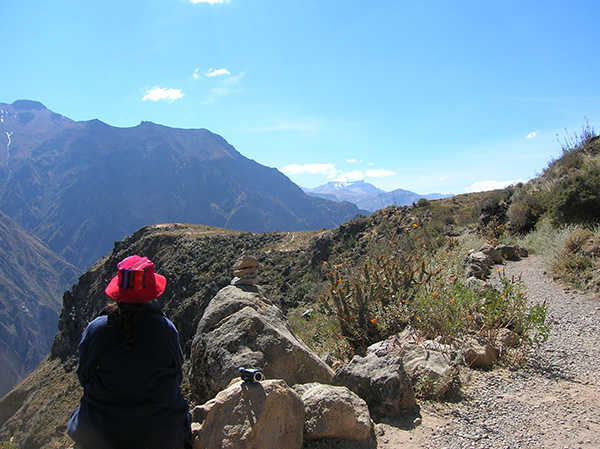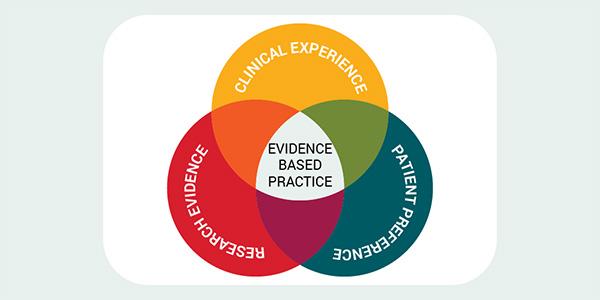Living with clear values, a well-defined identity and meaning liberates us and allows us to move mountains, thus changing our lives and aspiring to greater happiness. Here's how.
My colleague Lyvai Faïnicka shared a wonderful sentence at the beginning of the year: “If I feel confusion and turbulence around me, I am growing up. And, in spite of everything, I remain peaceful and calm inside”. What a marvel! And boudiou that he is right!
Question: what is it that keeps you peaceful and calm inside despite everything? The answer can be summed up in one word: alignment.
Gregory Bateson's Fields of Consciousness
In the early 1900s, anthropologist Gregory Bateson analyzed the ‘primary’ tribes in Bali – they were ‘primary’ because they had not yet been influenced by any outside civilization. He realized that the field of consciousness was gradually changing. Thus, the first element of consciousness is about the environment that surrounds us: where am I, who is there, when? The second element is the behavior: what am I doing here? Third element is the level of the abilities, the skills: am I capable of doing this? Do I have the abilities and skills to do this? Fourth element, beliefs and values: what is driving me (my positive beliefs about myself and the world around me), and what is blocking me (my limiting beliefs about myself and the world around me) and what are my true values? Fifth element, identity: who am I in all this? What is my role or what distinguishes me throughout all my roles? And sixth element, the transpersonal: what is the true meaning of my action? What is its overall purpose? What is beyond me that justifies it in a larger ‘Whole’?
While Gregory Bateson had identified levels of consciousness by observing these Balinese tribes, Robert Dilts, a renowned specialist in Neuro-Linguistic Programming (NLP), placed them in a pyramid, because very few people reach the ultimate level of consciousness.
Deeper change: the five pieces of evidence
These levels of consciousness are also the levels that contribute to change, that help us to change our lives and thrive for happiness. The higher you move up the pyramid, the deeper the transformation, the more it is based on a meaning that the person adheres to. Here is the evidence.
Evidence #1: A clear purpose help creating the vision one has of one’s path. “There is no favorable wind when there is no course,” Seneca used to say. This is totally true when the change of life is reactive, zigzagging, without deep reflection. Of course, it may work in the short term and generate satisfaction and renewed energy, but hardly ever in the long term. A clear vision determines a general direction around which the other elements naturally fit together.
Evidence #2: Taking charge of yourself means having determined your role, your identity. By the way, who exactly am I? Am I an actor or a spectator of my life? Am I at the rudder, nose to the wind, or in the hold, undergoing? The human being can only be at peace with himself if he has the opportunity to decide and create/produce his life. This is the path to his moral freedom, not necessarily physical freedom. “To be free of mind” is much more powerful than just free in the body – I am always in awe of people who, suffering from a physical handicap, have a moral high ground and are capable of often grandiose achievements.
Evidence #3: You can only be happy when you live according to your own intrinsic values. However, there are two difficulties. First, are we really sure that these are our personal values, determined with complete freedom of thought? Or have we ‘imported’ them from our educators, parents or others? If you only knew how many times I’ve come across clients who fell down when they discovered that the values that underpinned their lives did not belong to them!
The second difficulty is that there is a big difference between an abstract value and a real-life value. A simple example: many will tell you that they apply the value RESPECT. In everyday life, however, we find them working like zombies, devouring their sandwich on top of their keyboard, not being able to support an argument in front of a colleague or their life partner, and so on. A stated value still has to be congruently applied in everyday life, and that is a completely different matter.
Evidence #4: Beliefs are to be found on the same level of consciousness in the Bateson-Dilts pyramid. Here, too, the stick can cause deep wounds. Positive beliefs clearly empower us. Limiting beliefs block us in our actions. Like when we say: ‘I am not capable…’, ‘It’s not for me’, ‘I don’t have the right to happiness’, ‘Others are better than me’, ‘I can’t do it without money’, ‘After fifty years, it’s useless to continue learning’, etc. Self-sabotage has its origin in our limiting beliefs. It is therefore also at this level that one must introspect oneself… or give oneself permission to ask for help, to invest in oneself and one’s happiness.
Evidence #5: You must have an unshakeable faith in your skills and abilities. This is my promise as coach and mentor: Nine out of ten people I’ve met for more than twenty years believe that they don’t have enough resources and skills to change their life path. That’s a lot of hogwash! I take great pleasure in proving them that it is wrong and encouraging them to reveal the immensity of the resources that surround them or that they already possess, deep down inside. Quite often, they tell me that they already knew it. Did they? So is it a question of permission, then? Do we need someone else to allow us to get better, to increase our energy, to give ourselves the right to happiness, even if we have to go through sometimes complex and arduous steps to get there?
The logical levels of consciousness are a wonderful tool for marking out the change of life. Better still, they give them a meaning, a direction that can be analyzed, foreseen, glimpsed and drawn up in stages.
And it is there, too, that I find a lot of meaning in my work as mentor and coach.
Sylviane Cannio





